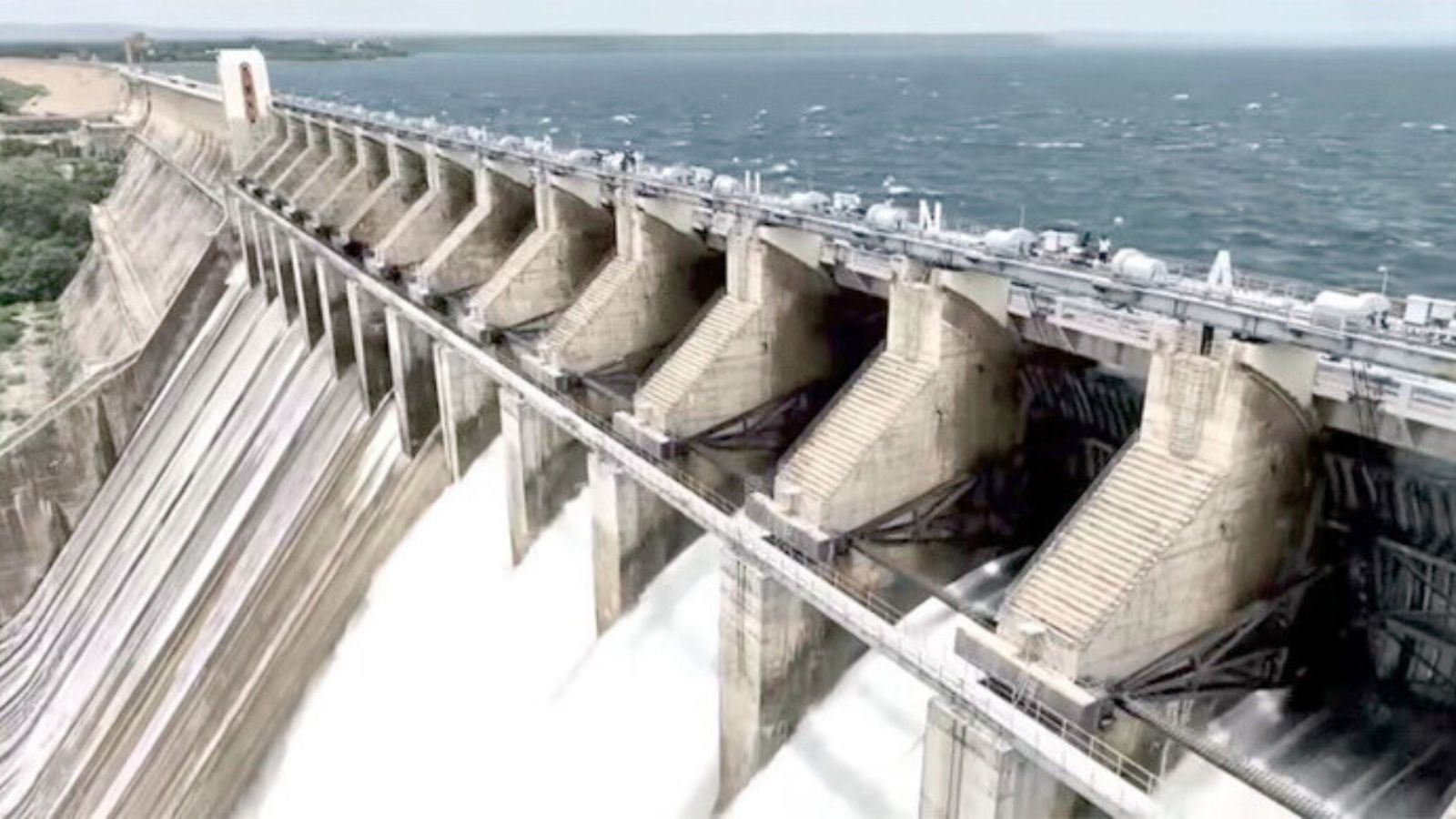When the monsoon roars, the gates of our biggest dams rise like giant steel curtains.
Crest gates are massive steel gates fixed at the very top of a dam, controlling how much water is stored or released. Their name comes from the Latin word crista, meaning “top” or “highest point,” which perfectly describes their position on the dam’s crest. They are also known as overflow gates or spillway gates.
Consider the Nagarjuna Sagar Dam with its 26 crest gates or the Srisailam Dam with 12—both on the river Krishna. In the rainy season, these gates open in a carefully timed sequence, sending massive torrents downstream while protecting the dam and surrounding areas from floods. When closed, they store enough water for irrigation and hydropower, sustaining millions across Andhra Pradesh and Telangana.
Crest gates are made of high-strength structural steel, each weighing hundreds of tonnes. At Nagarjuna Sagar Dam, for example, each gate measures over 13 × 13 meters and weighs close to 200 tonnes. Massive electro‑hydraulic hoists lift or lower these gates with millimetre‑level precision, even against the immense pressure of the impounded water.
Crest gates keep dams both safe and useful, making them engineering wonders and vital lifelines. Each monsoon, their powerful operation attracts crowds eager to watch the spectacle.



